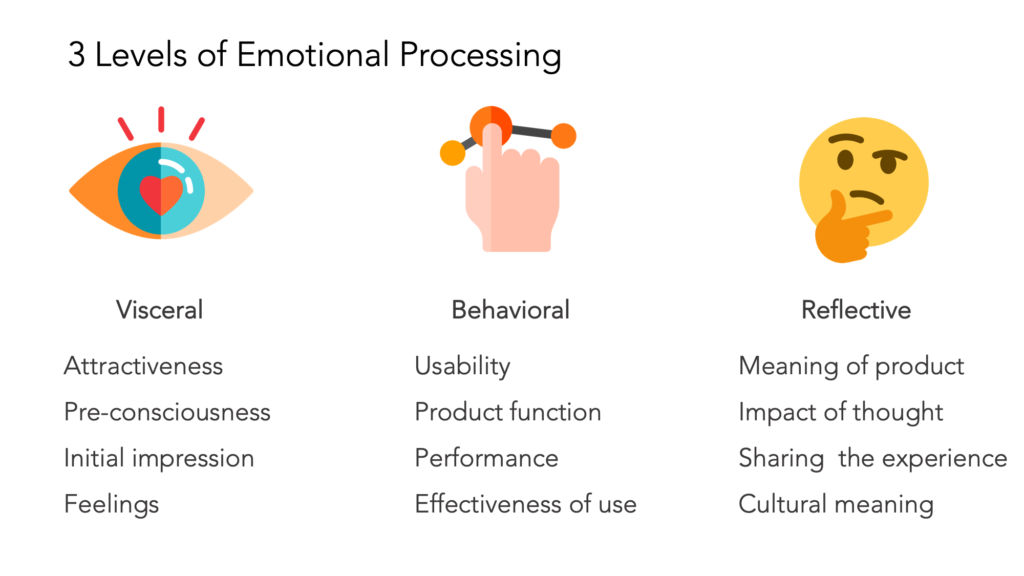Norman describes the value of a positive experience, as something that the human mind can memorize better, and through that experience, it is also easier to learn new behaviors. The human mind connects positive experiences to learn and understand the environment better. From negative experiences, we master to not make the same mistakes again. This is not only important information when it comes to creating a new interface design but also for many other design disciplines. The three dimensions of design consist of visceral, behavioral, and reflective design.
The term ‘Emotional Design’ was first mentioned by Don Norman and describes a positive connection between the user and a certain product/service or advertisement. That means the user or consumer goes through these three steps before he or she is attached to a product or not.
Visceral Design:
Visceral Design describes the first touch with a product or service, it’s the first impression a new tool gives us. This experience can already generate an instant and strong feeling for the product or service.
Behavioral Design
The behavioral aspect describes how well the product functions and how familiar the user interacts with it. But not only in product design behavioral aspects are crucial. Design is also able to change and guide the user in a certain direction.
Reflective Design:
In the last dimension of emotion, the user reflects on the experience. This phase is about how the product or service felt and what the user gained from it. As described, it depends on the positive or negative occurrence the user met, if the product or service passes the test.

www.medium.com/@yujsocial/what-is-emotional-design-d091c383c6ee